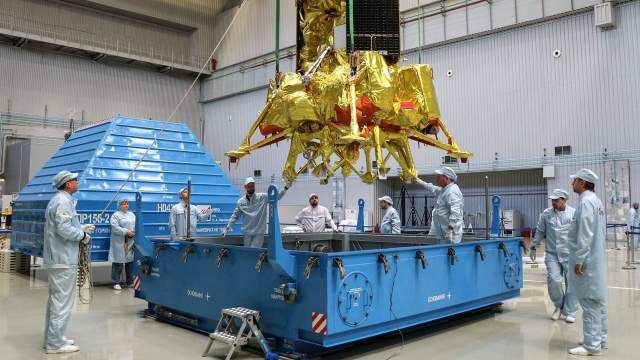What kind of research will be carried out with the help of the Russian automatic station, the launch of which is scheduled for August 11
Why can dust particles levitate, how do mysterious "crimson mists" arise, is it true that comets carry organic matter in the universe? These fundamental questions will be answered by the Luna-25 mission. This was told to Izvestia by scientists who planned experiments for the expedition. The launch of the spacecraft is scheduled for August 11. Experts noted that the mission will set a new pace for Russian science in space exploration and in many related areas.
Space water
Russia is preparing to launch the Luna-25 automatic station. The spacecraft will make a soft landing near the lunar South Pole and deliver 30 kg of payload there. Including eight unique instruments that will explore the Earth's satellite. Equipment developers from the Space Research Institute of the Russian Academy of Sciences told Izvestia how it will work and what scientific discoveries can be made with its help.

The layout of the planned automatic interplanetary station "Luna-25" in the museum at the Institute of Space Research of the Russian Academy of Sciences
Image source: Photo: IZVESTIA/Dmitry Korotaev
— Our area of responsibility conditionally begins after landing. The planned service life of the device is one Earth year. The most important tasks are to investigate the elemental composition of the regolith (soil) and exosphere (plasma—dust shell) of the Moon, - said Academician of the Russian Academy of Sciences, Scientific Director of the ICI of the Russian Academy of Sciences Lev Zeleny.
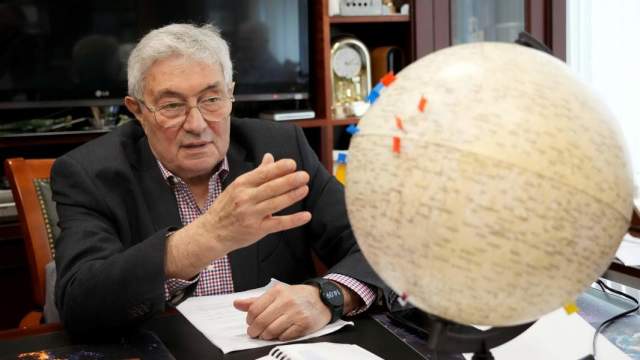
Scientific Director of the ICI RAS Lev Zeleny
Image source: Photo: IZVESTIA/Dmitry Korotaev
He explained that all the substances on the Earth's satellite are valuable resources that will further help in the exploration of outer space. The most important of them are water particles contained in regolith, and rare earth metals that meteorites brought to the moon.
At the same time, Lev Zeleny stressed that scientists would not be themselves if they did not strive to look far "beyond the horizon." In particular, they hope that the lunar expedition will help to understand how life appeared on Earth.
— Water, if it is found, is not only a mineral, but also a valuable object for study. There is a hypothesis that comets brought it to the moon," the academician said.
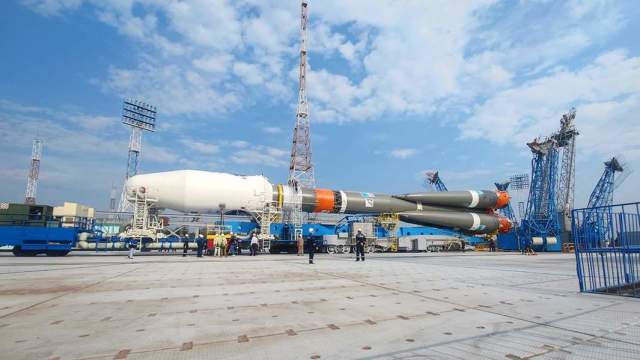
Installation of the Soyuz-2.1B rocket with the Luna-25 automatic station at the launch complex of the Vostochny cosmodrome
Image source: Photo: RIA Novosti/Roscosmos Press Service/RSC Energia
He explained that comet nuclei are, in fact, pieces of dirty ice that may contain organic molecules. The scientist believes that if organic matter is found in the "moon water", it will prove its cosmic origin. This may have implications for understanding how life came to be on our planet.
Panoramic "vision"
The ICI staff said that the scientific equipment of Luna-25 is a self—coordinated complex. Each device included in it has an independent value, but the greatest results can be achieved with their common work. The STS-L device will be the first to be turned on at the station — this is a television complex that consists of eight cameras.
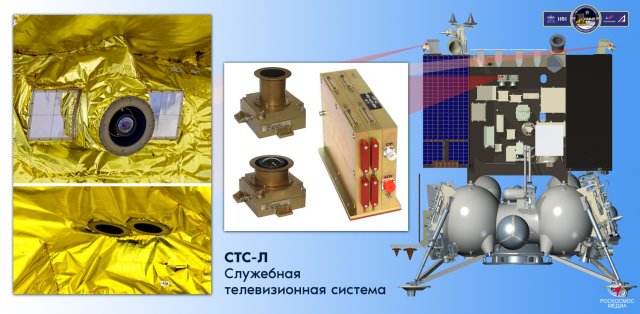
Image source: Photo: Roscosmos
— One camera will start working while still in orbit, photographing the lunar surface. This will make it possible to clarify the landing site and collect data on the terrain of the satellite in the southern circumpolar zone. This is important for the next expeditions," said Ivan Polyansky, chief designer of the STS—L project.
He also said that during the moon landing, the cameras will shoot the surroundings in panoramic mode. This is necessary in order to develop a system for automatic selection of the landing site in the future. Such a system will be implemented at the next lunar station. It will provide greater reliability than the current reduction of the "Moon-25" on a ballistic trajectory.
The layout of the planned automatic interplanetary station "Luna-25" in the museum at the Institute of Space Research of the Russian Academy of Sciences
Image source: Photo: IZVESTIA/Dmitry Korotaev
After landing, the STL-S complex will take pictures of the lunar surroundings in the lunar landing area and record the progress of experiments, helping scientists to obtain visual information and control the manipulator when digging and taking soil. To perform this operation, specialists use a robotic "hand". In the history of Russian cosmonautics, such a solution is used for the first time. Previously, interplanetary stations used drilling rigs. The "hand" is equipped with a bucket for digging and a "syringe" for soil sampling. Their internal volume is 5 and 3 cubic meters. see respectively.
At the same time, the unit has five drives that provide it with six degrees of freedom. Its working area is a sector of approximately 45 cm by 130 cm. The manipulator will be able to sink into 30-40 cm. According to scientists, this is enough to detect water.
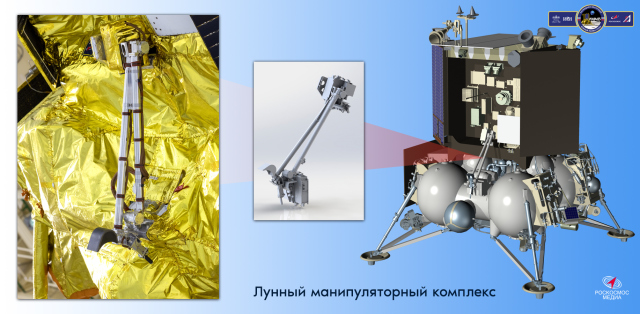
Image source: Photo: Roscosmos
— LMC ("Lunar Manipulator Complex". — "Izvestia") light, only 5.5 kg. He moves slowly, but develops good efforts. During the tests on Earth, an analogue of regolith was created, which was mixed with 1.5% water and frozen to -100 ℃. In such conditions, the soil turned into stone. But the manipulator coped. He tore off pieces of ice and took them as samples of the "rock," said Tatiana Kozlova, head of the Laboratory of Robotic Systems for Planetary Research of the ICI RAS.
Scientists will control the device using cyclograms — messages with a program of actions. Before each stage, they will check the correct operation of the manipulator.
Levitating particles
One of the most mysterious phenomena on the moon is dust. It consists of solid microparticles of irregular shape, which have sharp notches. Dust is dangerous to humans because it irritates the skin, gets into the eyes and clogs the respiratory tract. It also "blinds" the devices, settling on the sensors and closing the solar panels. Scientists have found out that not only mechanical effects, but also natural causes can raise dust on the moon.
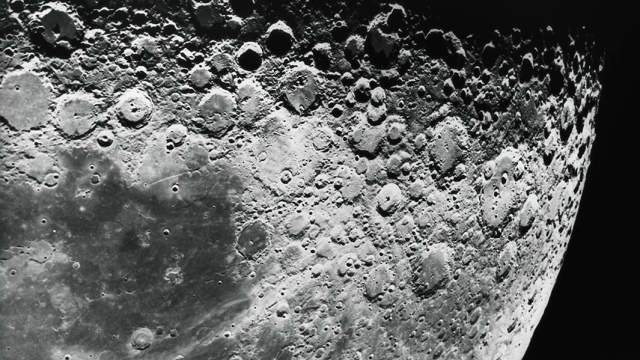
Photo: Getty Images/Stocktrek
Image source: iz.ru
— At dawn, under the influence of sunlight, the fraction of particles is electrified and rises up. At the same time, positively charged particles remain on the surface. This is how an electric wave is formed, which "rolls" along with the border of light and shadow on the Moon, raising fountains of dust. They then "hang" above the surface for a long time, forming a "crimson fog" in the rays of the dawn sun, — Alexander Zakharov, chief researcher of the Department of Physics of Planets and Small Bodies of the Solar System of the ICI RAS, explained to Izvestia. He developed a device for studying lunar dust as part of the Luna-25 station.
The scientist added that there is still no definitive understanding of the mechanism of levitating dust particles. However, similar processes can be observed on other planets of the Solar System.
Lunar Soil Scientists
The "heart" of Luna-25 is a laser mass analyzer LASMA-LR. It is designed to determine what elements the lunar soil consists of. In total, the device contains 11 cells. In them, the manipulator will put the selected samples.
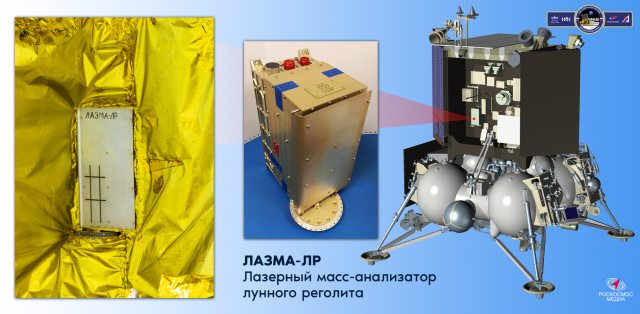
Image source: Photo: Roscosmos
— A strong laser beam is directed at the test material in the cells. It evaporates the soil and converts it into plasma — ionized gas. After that, special sensors examine the ions and determine their mass. Comparing this information with known data, we will find out the composition of all the elements that are present in the sample," explained Alexander Chumikov, head of the experiment, researcher at the Department of Physics of Planets and Small Bodies of the Solar System of the ICI RAS.
The LIS-TV-RPM device will also examine the soil. It is designed to work in the visible and infrared range. The advantage of this equipment is that it is mounted on a manipulator and will be able to look into the farthest and darkest corners of the dug trench. The device is also equipped with stereo cameras. They give a three-dimensional picture. With their help, scientists expect to study the obstacles that may occur on the path of the manipulator. Such as rocks or meteorites stuck in the lunar soil.
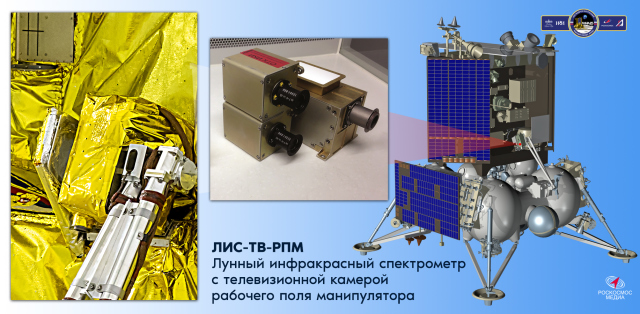
Image source: Photo: Roscosmos
— One of the interesting tasks of the device is to study the rate at which H2O particles "evaporate" in the regolith layers exposed during excavation. This is important for the development of methods for extracting lunar water," said Ilya Dzyuban, one of the developers of the device, a leading engineer of the Department of Physics of Planets and Small Bodies of the Solar System of the ICI RAS.
The HADRON-LR instrument is of great importance for the study of the lunar surface. It is also designed to study the soil, but unlike other equipment, it can "look" through the thickness of the rock.
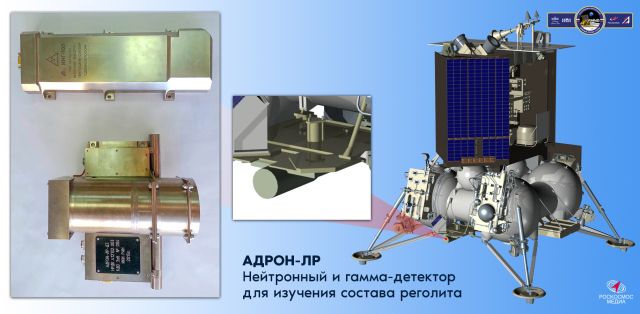
Image source: Photo: Roscosmos
— The device "bombards" the ground with neutrons to a depth of 1 m and registers the response. According to which neutrons come back out, one can judge both the chemical composition of the rock and the depth at which certain elements are located," explained Maxim Litvak, head of the neutron and gamma spectroscopy laboratory of the Department of Nuclear Planetology of the ICI RAS, the developer of the experiment.
He noted that such a "neutron probe", developed by Russian specialists, has been working on Mars for more than ten years aboard the Curiosity scientific laboratory and has proven itself perfectly.
This is only the first stage
Experts believe that the Luna-25 mission will set a new pace in the exploration and development of the Earth's natural satellite. The lunar landing in the southern circumpolar region is especially significant.
— Many people consider the study of this field not only useful, but also profitable. According to already known data, a significant part of the lunar useful resources is concentrated here. Such as water and rare earth materials," Vladislav Shevchenko, head of the Department of Lunar and Planetary Research at the P.K. Sternberg State Astronomical Institute of Moscow State University, told Izvestia.
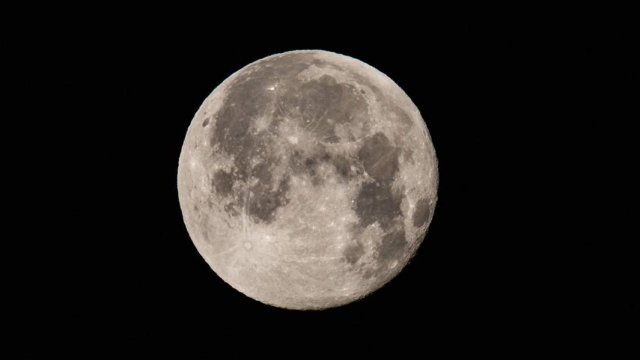
Photo: Getty Images/George Rose
Image source: iz.ru
The specialist explained that it is possible to produce rocket fuel from the components of water — hydrogen and oxygen. This will make it possible to use the Moon as an "intermediate base" when organizing long-range space expeditions in the future. Rare earths, in turn, stimulate the development of many industries on our planet.
— There are craters near the lunar South Pole that the Sun has not looked into once in the last 4 billion years, — said Alexey Semikhatov, popularizer of science, head of the laboratory of the theoretical Department of the Lebedev Physical Institute of the Russian Academy of Sciences. — Therefore, we expect to see cosmic "precipitation" there, which has accumulated since the infancy of the Solar System and at the same time was not exposed to sunlight.
The scientist explained that the Moon is not protected by the atmosphere, so everything that collides with it reaches its surface. That is why, by studying the Earth's satellite, we can learn more about the history of the Solar System.
— It is important that Luna-25 is not an isolated project, but only the first stage of a large—scale program to study the Earth's satellite. It includes the Luna-26 orbital mission, and the further development of the Circumpolar region on Luna-27, and subsequent expeditions," Ilya Ovchinnikov, a spacecraft specialist and author of the Dobry Ovchinnikov Telegram channel, shared his thoughts.
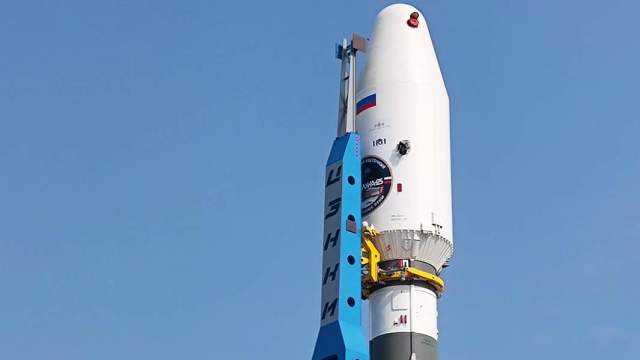
Photo: RIA Novosti/Roscosmos Press Service/RSC Energia
Image source: iz.ru
He added that the return of domestic scientists to direct interplanetary research is significant for our country. The expert believes that Luna-25 will give an incentive to the emergence of new teams of equipment developers and experiment directors for exploring space and other worlds.
Andrey Korshunov
